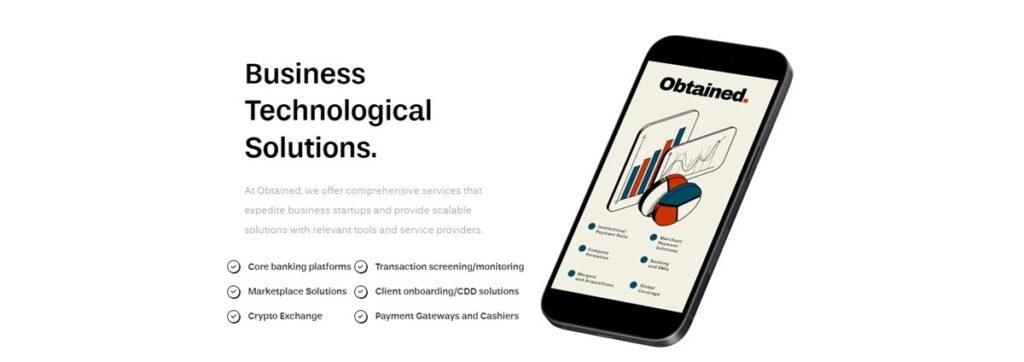Nowadays, transferring money has become a seamless process all thanks to advancements in technology. However, the increasing reliance on virtual payments has introduced us to some new complexities in the process of funds transfer.
To facilitate secure and efficient digital transactions, there are some financial institutions now that utilize networks known as payment rails. This guide is all about payment rails as it will break down the concept of payment rails for beginners and shed some light on their significance in today’s era of financial landscape.

What are Payment Rails?
Payments rails are nothing but a virtual network. It connects financial institutions and enables the transfer of digital funds between multiple accounts. Bank purchases, card issuers, and some fintech companies can utilize payment rails to facilitate these transactions safely. Each payment rail operates under specific regulations.
Platforms such as Obtained can provide a comprehensive guide on all the rules and regulations of payment rails. Obtained employs a centralized system to verify the process and transactions. Now you might be wondering, where to find a suitable payment rail.
Well, platforms such as Obtained can help you out in this quest. It will find a suitable payment rail for your business. While the primary function is the transfer of funds, payment rails also transmit essential information to relevant authorities, ensuring transparency and compliance.
Types of Payment Rails
Payment rails are of several types that you can find from Obtained. Some of them are discussed below:
Automated Clearing House (ACH)
Established in the ’70s, ACH is a dominant payment rail in the U.S., connecting financial institutions. It facilitates electronic transfers for various entities, with a clearing process that may take a few business days.
Card Rails
Credit and debit card issuers like Visa, Mastercard, and American Express operate their private card networks as payment rails. These networks connect merchants’ bank accounts with customers’ card-issuing banks.
Real-time Payment (RTP)
The real-time payment was launched in 2017. It provides instant payment finality. The Clearing House, a financial services company, created RTP to offer rapid fund transfers, primarily within the U.S.
SWIFT
The Society for Worldwide Interbank Financial Telecommunication connects 11,000 banks worldwide through its international payment rail. SWIFT transfers often take a few days but allow users to choose from multiple fiat currencies.
Fintech Apps
Digital finance apps like PayPal, Zelle, and Venmo utilize these banking rails such as ACH for user account connections and internal payment rails for in-app transactions.
How do Payment Rails Differ?
Payment rails differ based on various factors. Therefore, understanding these distinctions is essential when you are choosing a suitable network for a particular transfer. Here are some key factors to consider:
Average Settlement Time
The time it takes for a payment to be confirmed, known as settlement time, varies among payment rails. Some platforms provide instant finality, ensuring rapid transaction processing. On the other hand, certain networks may take several days to complete the transfer. This factor is essential for those seeking timely or real-time transactions.
Geographic Limitations
Payment rails are not one-size-fits-all. Some are designed to operate within specific countries or regions, catering to local transactions. Others, however, are built to facilitate international transfers, allowing users to send funds across borders. Understanding these geographic limitations ensures that users select a payment rail aligned with their intended transaction locations.
Transaction Fees
Each payment rail comes with varying transaction fees. Domestic transfers within a country often incur lower fees, while cross-border transactions, involving international payment rails, may be associated with higher charges. Careful consideration of transaction fees is necessary to manage costs effectively and choose the most economical option.
Maximum Transfer Volume
Entities dealing with substantial capital volumes must take into account the maximum transfer levels set by payment rails. Some platforms may have limitations on the amount of funds that can be transferred in a single transaction. This consideration is particularly relevant for large institutions, governments, or businesses involved in sizable financial movements.
Accepted Fiat Currencies
Payment rails differ in their acceptance of fiat currencies. Some are tailored to specific currencies, accepting only those associated with a particular region. In contrast, others are more versatile, accommodating multiple fiat currencies. Users must be aware of the accepted currencies on a given payment rail to ensure compatibility with their financial needs.

Final Thoughts
Payment rails form the essential infrastructure for the safe transfer of digital funds. On the other hand, it is also playing a vital role in our interconnected financial world. It could be through an established network like ACH or innovative blockchain-based solutions. These rails ensure the seamless electronic transfer of funds. As technology continues to evolve, payment rails will likely remain at the forefront. They will be providing secure and efficient solutions for a wide range of financial transactions. Nonetheless, you can find the payment rail for your business with the help of Obtained.


